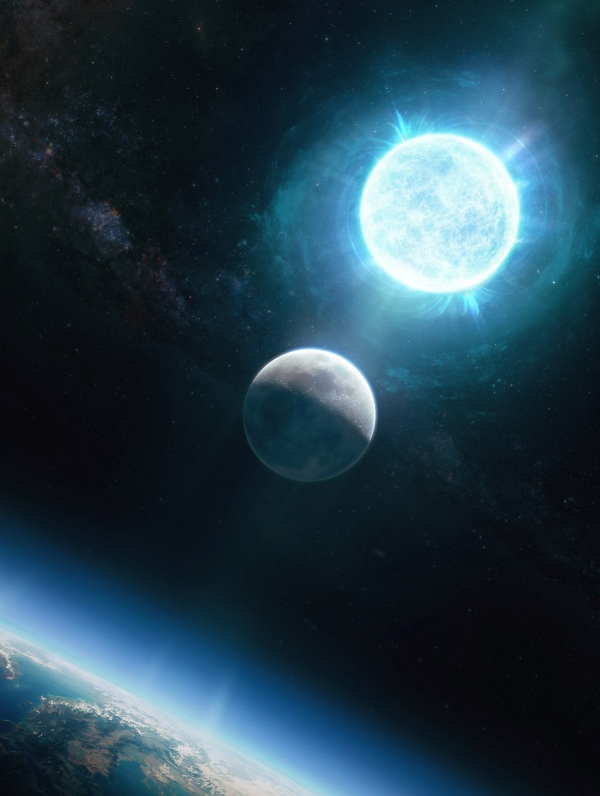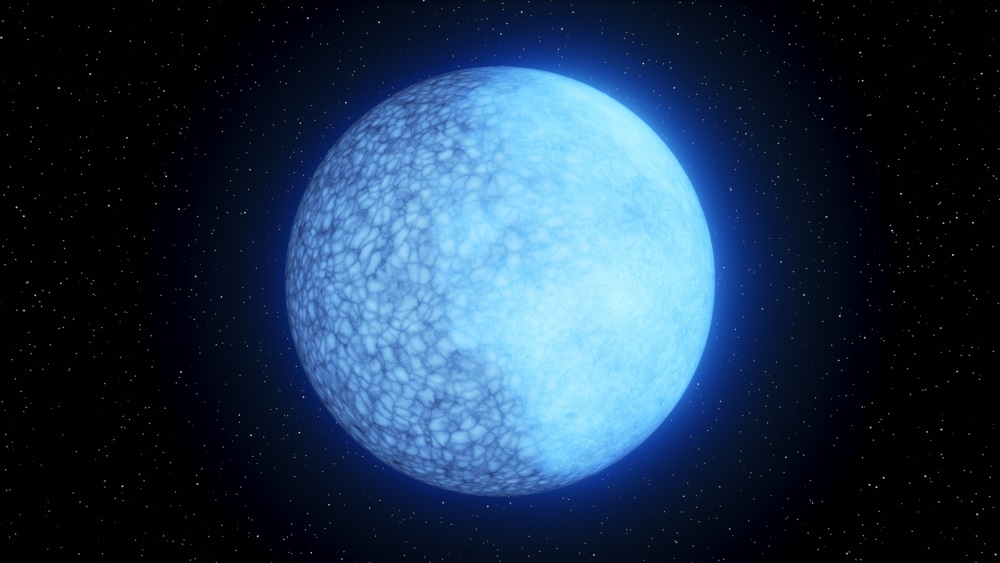August 27, 2024
Star Lives and Afterlives
ISTA welcomes stellar evolution specialist Ilaria Caiazzo as an assistant professor
A two-faced star, a star as massive as the Sun but as compact as the Moon, and star ‘corpses’ that engulf entire planets and disrupt planetary orbits. Ilaria Caiazzo, an astrophysicist who has made stunning discoveries, joins the Institute of Science and Technology Austria (ISTA) as a new assistant professor. In this interview, she discusses how philosophy led her to study stellar evolution and death, and how she manages her broad interests including movie production.

“Observations in astronomy are like doing detective work: we must collect precious evidence without messing with the crime scene.”
You initially studied philosophy. Now, you want to understand the lives and afterlives of stars. How did your interest in astronomy spark?
I have always had a broad spectrum of interests. When I started studying philosophy at university, the field that most interested me was metaphysics, and in particular how humans have tried to answer big questions such as “What is time?”, “Where do we come from?”, and “What is the origin of the universe?”. Many of these questions are now investigated by physicists. This is probably what ignited my passion. I first switched to theoretical physics and then astrophysics. But even now, my interests remain very broad and I would call myself a non-conventional astrophysicist. Astronomy is a strange type of science that relies heavily on observations. We cannot run experiments; we must observe and make sense of what we see. It feels like doing detective work: we must collect precious evidence without messing with the crime scene.
You describe stars as ‘beautiful and complex laboratories.’ How do you plan on exploring this vast cosmic laboratory from Klosterneuburg?
Right now, I am particularly interested in neutron stars. These are crazy objects of a mass similar to the Sun but as small as a city. These objects are so dense that a spoonful of a neutron star would weigh more than Mount Everest. Neutron stars are a strange ‘lab’ under the most extreme conditions with super-strong magnetic fields and gravity. To understand such stars, one needs to take all of physics into account, from the theory of general relativity to quantum mechanics. Also, their extreme nature allows us to test the laws of physics in regimes that are not attainable in laboratories on Earth.
Beyond neutron stars, you also study white dwarfs, star remnants whose size is comparable to that of Earth with a mass similar to that of the Sun. What do white dwarfs tell us about the evolution of planetary systems?
While neutron stars and black holes are also ‘corpses’ of stars, they are rare. Only less than five percent of stars in the universe die as neutron stars. On the other hand, white dwarfs show us the evolution of almost all stars in the universe. Also, nearly all the planets we have discovered outside the solar system orbit around stars that will become white dwarfs when they die. This gives us invaluable information about the evolution and disruption of planetary systems when a star dies. Our Sun will also eventually turn into a white dwarf when it dies. On its way, it will first puff out and engulf Mercury, Venus, and perhaps even Earth, while disrupting the orbits of many of the remaining planetesimals.


You made the major discovery of a ‘two-faced’ star nicknamed Janus, also a white dwarf. What does ‘two-faced’ mean?
The discovery was serendipitous. We did not predict that we would find such an object and, in fact, we were looking for something else. White dwarfs’ outermost layer is made up of the lightest element present, usually hydrogen. Some get stripped of their hydrogen layer, so they show only helium on their surface. It has been predicted that, because of convection, some hydrogen-dominated white dwarfs transition into helium-rich white dwarfs at a certain stage of their evolution. Since these layers are gaseous, we would expect such a transition to be uniform all around the star’s surface. However, Janus shows a sharp border between its hydrogen-rich and helium-rich faces, something never observed before. To keep these gaseous elements separate, Janus must have a magnetic field at its surface that creates this asymmetry.
Speaking of stellar magnetic fields, we recently witnessed northern lights at latitudes much farther south than usual. This phenomenon originates in the Sun’s magnetic field. Are there also extraterrestrial auroras?
The particles ejected from the Sun interact with the Earth’s magnetic field to generate these auroras around our planet’s polar regions. On the other hand, other stars like M-dwarfs have huge magnetic fields as well as magnetic planets that orbit around them. Thus, there are definitely some very intense and colorful, crazy auroras out there in the universe. These auroras are perhaps not even limited to the polar regions but are observed all over these planets.
You are not only an assistant professor of astrophysics, but also an author and producer. How do you juggle all these activities?
I think everyone needs to have more than one area of interest, and time management is key. Movie production is highly work intensive and it cannot really be done on the side. For example, I needed to take two months off during my PhD to produce my latest short movie. Producing is still a passion, but scriptwriting is more compatible with my new position as an assistant professor at ISTA.
Shortly before you joined ISTA, you became a Knight of the Order of Merit of the Italian Republic. How does receiving such an honor as a young researcher feel?
This was really a surprise to me and my family. Receiving such an honor for doing good research felt surreal. The media attention in Italy and around the world started with my first Nature paper, in which I described the smallest observed Moon-sized white dwarf. Then the story with the two-faced star amplified the wave.
“I am working with my colleagues on turning ISTA into a pole of attraction for astronomy in Europe.”
How do you envision your work at ISTA?
From my first visit to ISTA during the faculty application process, I felt that this was a place where I could create things and help shape a growing astronomy group. Professors are very well supported and provided with the best conditions and environment to do good science. Furthermore, I was very happy that ISTA selected my fellow astrophysics colleagues to set the cornerstone of its astronomy faculty. Together, we work on turning ISTA into a pole of attraction for astronomy in Europe. We have the resources available. Thus, we must only do it!



